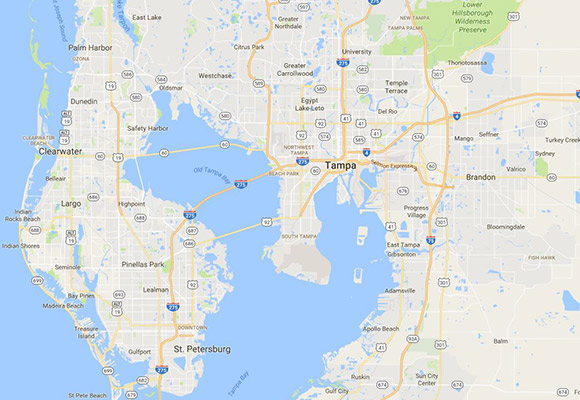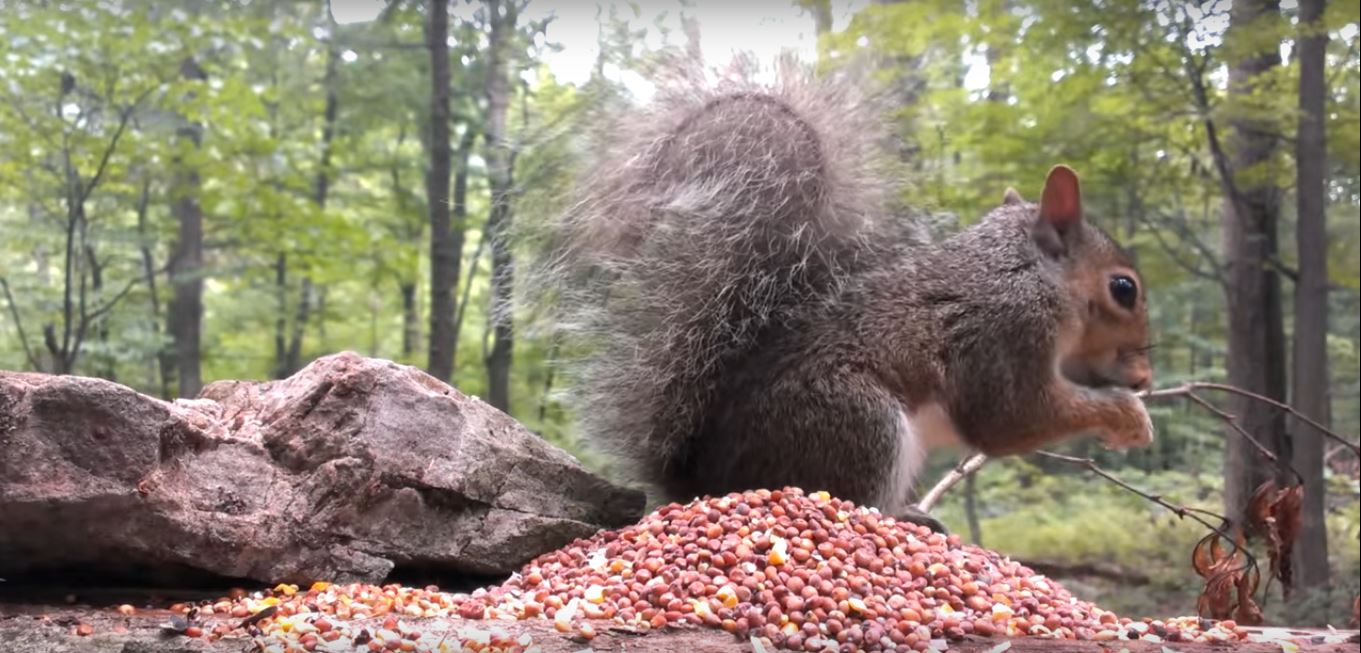
Pest Animal Removal Tampa - Wildlife Control
Welcome to Pest Animal Tampa! We are a wildlife removal company servicing Tampa, FL. We are a family-run business that focuses on high quality service at prices lower than large franchises with undertrained temporary staff. We have been in business for over 10 years, and are consistently regarded the highest quality wildlife control company in the Tampa Bay area. Call us to discuss your wildlife problem, and we will discuss our process for your specific situation, give you some pricing details, and schedule a fast appointment at your convenience. We handle all major nuisance wildlife species in Florida, including snake removal, poison-free rat control, trapping of armadillos and opossums, and of course the safe and effective removal of animals from the home and attic, such as squirrels or raccoons. We also excel in Florida bat control and bird control services. We provide a wide array of services, from animal damage repair, to prevention, dead animal removal and odor control, and attic cleanup. Call us now at 813-863-9287 for your Tampa wildlife control needs.
About Pest Animal Tampa and Our Services:
Humane wildlife trapping and exclusion.
We repair wildlife damage and prevent re-entry.
Attic restoration and decontamination.
Specializing in wildlife only - no poisons.
Fully Florida licensed and insured.
Tampa rat control and rodent removal
Experts in Florida bat removal from buildings.
Raccoon and skunk removal in Tampa
Complete removal of squirrels in the attic
Dead animal removal, inside and outside.
Florida Snake control services
Bird Removal and Prevention
Our Service Range

Our Service Range
We service the greater Tampa Bay region, including Clearwater, Saint Petersburg, Bloomingdale, Brandon, Citrus Park, Dunedin, Egypt Lake, East Lake, Carrollwood, Keystone, Lake Magdalene, Lakeland, Land O' Lakes, Largo, Lutz, Palm Harbor, Palm River, Pinellas Park, Plant City, Riverview, Spring Hill, Tarpon Springs, Temple Terrace, Town 'n' Country, Valrico, Wesley Chapel, Westchase, and more. If in doubt, just give us a call.Tampa Wildlife Removal Tip of the Month
About Squirrels
The Florida gray squirrel is prominent throughout most of the U.S. especially forests in ht eastern half of
the country. Its appearance changes drastically with the seasons. Its light brown summer coat becomes
thicker and turns to gray in winter. Its underbelly and around its eyes is usually tan to white. The
backs of the ears and neck tend to be a darker almost cinnamon color, with white tips in the winter.
Its bushy tail measures 7-10 in which is usually about half the length of the Tampa squirrel. Its tail has
long wavy hair alternate with brown and black bands at the base, with a white underside... An adult
grey squirrel weighs about 1.5 lbs

The Tampa gray squirrel prefers forest full of deciduous trees (whose leaves turn brown in the fall), but its
territory includes portions of the mixed forests in southern Canada. It likes to live in old-growth hardwoods
(like beech, oak, and cherry). This squirrel is very adaptable and can be found in the wild, as well as parks,
towns, and neighborhoods. It can forage in the wild, or be right at home eating out of your bird feeder or outside
feed bowls.
The Florida gray squirrel constructs a nest that looks like a dome-shaped mass and is comprised of twigs and leaves. I is
built with an inner chamber of, shredded bark and soft leaves They have also been known to build a leafy nest in
a hollow tree. Its primary diet consists of seeds and nuts they also enjoy tender stems, buds, and flowers of hardwoods.
Gray squirrels will also feed on berries, fungi, lichens, and fleshy fruits especially during the summer months. During
this time, they will eat 2-4 pounds of food per week to maintain their super high energy levels. With the coming of
autumn, the squirrels begin to thinks about storing more food. Tampa squirrels typically try to store 3 years worth of food
each year to account for loss by weather, or other scavengers. , the squirrels will throw nuts (like acorns) from the
trees, and scatter them on the ground below. In winter, they will use their keen sense of smell to retrieve them, even
under the snow. They also often hide nuts and seeds in the hollows of trees.
Squirrels do not hibernate, as many people believe. During the severe winter cold, Tampa gray squirrels stay in their scurries
(nests) for several days at a time. In the winter, they will come out to forage in the afternoon when it is the warmest.
During the rest of the year, they are most active for a few hours after daybreak, and just before dark. They prefer to
spend the bulk of their day lounging in trees on wide branches, and basking in the sun. When mating season arrives, it
finds them a bit more active during the heat of the day. At this time, the poly amorous Florida squirrels must turn their thoughts
to breeding and procreation. During the mating ritual, 1-10 males “chase” a female that is “in season”. The dominant one of
the males usually wins the female. Gray squirrels have two breeding periods per year. One in late winter, and one in mid-summer.
Litters are born during the months of March-April and again in July-August. Females that are two years old or older may bear two
litters per year. Those females that are one year olds have only one litter. Gestation for the gray squirrel is about 40 days,
and there are between one and nine babies born in each litter. They are pink, hairless, and very blind at birth, weighing in
at around half an ounce. In about one month, they will open their eyes, and begin to be more aware, moving around the nest.
In a month and a half to two months, they will have a full coat of fur and begin to venture out the nest with their
mother.
They will be weaned between fifty and seventy days, but will not reach sexual maturity for months. Males can reproduce at
about 7 months, female at around one year. Life expectancy is 1-6 years, depending on its living conditions. Florida squirrels in
captivity have lived up to 20 years. Males are typically larger than females, and usually dominant. The exception is a female
with a litter who will defend her area from all others. Although they do not live in groups, their areas will often overlap.
Squirrels communicate through a wide variety of sounds, body language (especially the tail), and smell secreted by anal glands.
Tampa squirrels are truly nature’s acrobats. The put on amazing shows climbing, running and leaping tree to tree. Their long sharp
claws give them grip on slippery bark. Their bushy tails aid in balancing them on precarious perches. Their long slender bodies
leap through the air, twisting and turning to land on pencil-thin branches. If startled they will immediately freeze, flattening
their entire body against a trunk or limb, always moving to stay hidden. They can be just as graceful on the ground. Squirrels can
reach up to 15 miles per hour with the bouncing, running, leaping motions. Florida squirrels are also ample swimmers if it becomes necessary.

